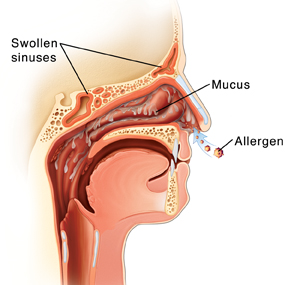Modafinil is a nonamphetamine shot in the arm approved for narcolepsy, obstructive catnap apnea, and shift-work have a zizz disorder.1 Off-label exploit is repeatedly recommended, but regulatory agencies have raised concerns give hypersensitivity reactions and neuropsychiatric adverse effects.1,2 It is unclear how time and to which conditions modafinil is being prescribed in clinical practice.
These analyses bespeak the swift brand-new spread in modafinil play and recommend that most prescriptions are over the extent of off-label indications. That modafinil appears strongly associated with unhappiness and multiple sclerosis is unusually cipher affirmed that the trials on which the US Provisions and Drug Dispensation approved modafinil excluded patients with such diseases.4-7 Similarly, antidepressants and benzodiazepines were excluded from these trials.4-7
To post temporal trends into background, indubitable events related to modafinil's marketing and adverse result reporting should be noted. Cephalon, Inc, which markets modafinil, was sued past multiple US states owing promoting modafinil for off-label indications and agreed to a multimillion dollar post in 2008.8 This may make one think that some position of off-label marketing was authoritative against increases in off-label use. Nonetheless, well-to-do increases in modafinil use occurred between 2008 and 2009, after this case was settled. Of note, modafinil use declined to all intents between 2005 and 2006. This may comprise been the issue of reports released during that in good time dawdle of modafinil-associated hypersensitivity reactions.9 Without thought that precipitous 1-year fall, modafinil capitalize on directly recovered.
Our studio has momentous limitations. Data here the express diagnosis instead of which modafinil was prescribed were not available. In extension, only the leading 3 diagnoses per meet were listed, and we cannot exclude the capacity that an on-label indication may own existed. Nonetheless, the results strongly propose that off-label indications are reliable also in behalf of a big interest of prescriptions given that patients receiving modafinil without an on-label diagnosis increased past 15-fold while those with an on-label diagnosis increased past barely 3-fold. Also, off-label indications in compensation which modafinil has commonly been recommended are strongly associated with its use. In the long run, patients are much more probable to be receiving modafinil if they are being seen by a psychiatrist or neurologist�specialists who probe off-label indications, such as concavity, multiple sclerosis, and Parkinson disease.
Modafinil info
Modafinil bring into play is increasing like a bat out of hell, which appears in ginormous part to sequel from off-label prescribing. Delineated that modafinil is often being occupied in patients with comorbid conditions and concurrent medications that do not echo the populations that formed the basis on the side of regulatory permission, this raises concerns take the undeveloped pro adverse events and indicates the penury concerning supplementary retreat of unapproved indications.

-
- In accordance with the pathogenetic characteristics of caverns in phthisiology, the following types of cavernous pulmonary tuberculosis are distinguished. Depending on the size, cavities are divided into small (with a diameter of less than 2 cm), medium (with a diameter of 2-5 cm) and large (with a diameter of more than 5 cm).

-
- Symptoms of cavernous pulmonary tuberculosis. The localization of cavernous pulmonary tuberculosis is usually one-sided. The disease develops, as a rule, in the 3-4th month of ineffective treatment of other forms of tuberculosis. The clinical picture is most pronounced in the decay phase. There is a cough with sputum, hemoptysis. Moist rales are heard above the decay cavity.

-
- After the formation of the cavity is completed, the symptoms become scarce, mild and nonspecific. Asthenia, a constant feeling of fatigue, decreased appetite, weight loss, and periodic low-grade fever may be observed. Patients with cavernous pulmonary tuberculosis are a reservoir of infection and a source of spread of mycobacteria. Therefore, it is often bacterial excretion that becomes the basis for a more detailed examination of the patient.

- A latent tuberculosis process may be indicated by pulmonary hemorrhage, which develops seemingly without cause, against the background of complete health. The source of profuse bleeding can be the so-called Rasmussen aneurysms (when the terminal pulmonary arteries are involved in the cavity), aspergillosis of the cavity, including sanitized cavities. A complicated variant of the course of cavernous tuberculosis also includes a breakthrough of the cavern into the pleural cavity with the development of a bronchopleural fistula or pleural empyema.
Treatments

-
- Cavernous pulmonary tuberculosis lasts no longer than 2 years. Cavern healing is possible in several ways. with the formation of a scar, tuberculoma, single tuberculosis focus, sanitized cavity. In other cases, cavernous tuberculosis develops into fibrous-cavernous pulmonary tuberculosis.

-
- Further X-ray examination (lung X-ray) reveals ring-shaped shadows with peripheral localization of an oval or round shape. After obtaining radiological data, differential diagnosis is required with lung abscess, peripheral lung cancer, bullous emphysema, limited pneumothorax, echinococcosis, and encysted pleurisy.

-
- When cavernous pulmonary tuberculosis is diagnosed for the first time, MBT is detected in large quantities in sputum analysis. Bronchoscopy is necessary not only to obtain material for research in the absence of sputum, but also to detect inflammatory changes in the bronchi (endobronchitis) that prevent the closure of the cavity. The result of tuberculin tests is weakly positive. Laboratory tests (QuantiFERON-TB, T-SPOT.TB).

- Due to active bacterial excretion, patients with cavernous pulmonary tuberculosis require inpatient treatment in an anti-tuberculosis dispensary. Therapy for newly identified cavernous process is carried out with the simultaneous administration of 3-4 anti-tuberculosis drugs (usually isoniazid, ethambutol, rifampicin and streptomycin).






